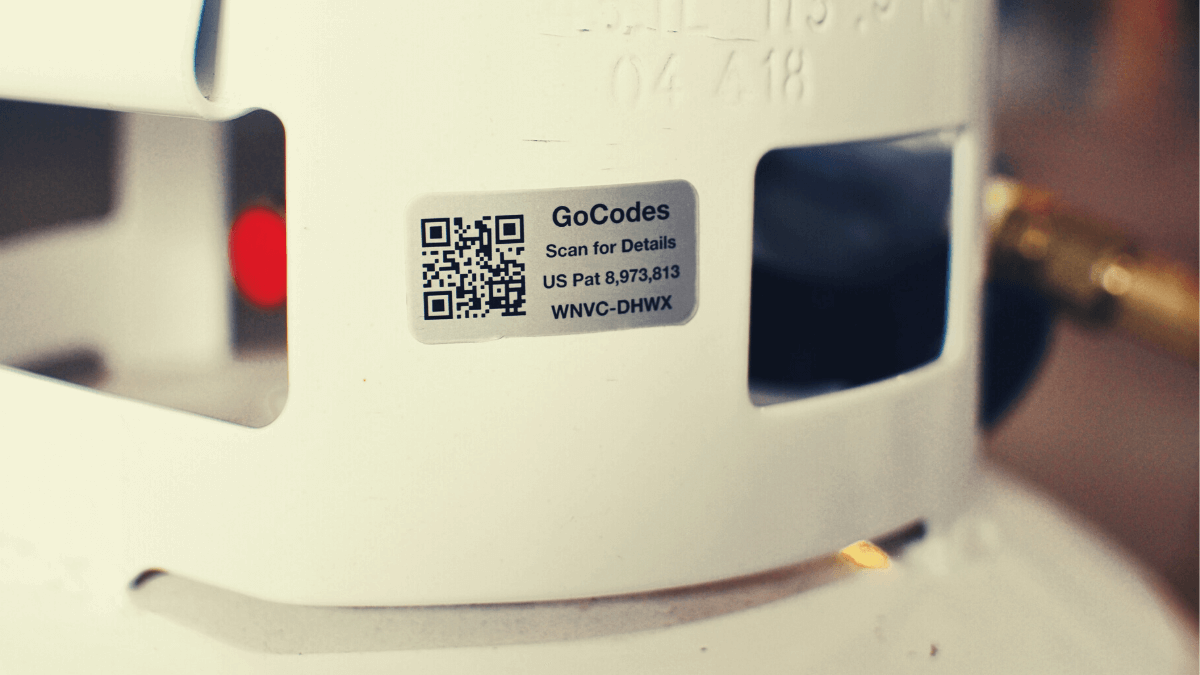Imagine those days when you worked on a bustling construction site, where your makeshift office in a container was a maze of files, drawings, and papers.
Finding what you needed was like searching for a needle in a haystack.
Nowadays, there’s a better way.
Instead of sifting through that chaos, you can open your phone or tablet to access everything you need instantly. And it’s not just for you—everyone who needs access to any project-related information has access, too.
This becomes a reality if you use software that can consolidate all your data in one place and make sharing of information effortless.
Moreover, such software can help you improve your project planning and optimize resource allocation.
These benefits—and more—can revolutionize your construction operations, making them more efficient and cost-effective.
We invite you to keep reading as we explore these benefits one by one, unlocking their potential to improve your construction business.
In this article...
Improved Project Planning
The first step for every construction operation is project planning.
During this phase, you have to outline tasks, allocate resources, set timelines, and define milestones for construction projects from start to finish.
Appropriate software can help you in this first and fundamental step by simplifying the overall process and making it more organized and transparent for everyone involved.
Let’s explore how such software can benefit your project planning.

First, the software lets you create detailed project schedules, including task dependencies and critical paths.
This helps allocate resources efficiently, reduce delays, and keep the project on track.
Additionally, you can assign labor, equipment, and materials to tasks using software tools.
This results in optimizing resource usage and avoiding overallocation or underutilization.
Construction software is also valuable for budgeting.
Statistics show that large construction projects often exceed budgets by a significant margin—80%. So, using a tool to improve your budgeting seems the right choice.

The right software can contain databases of material costs, labor rates, and equipment expenses, enabling more accurate cost estimates and preventing budget overruns.
Moreover, with real-time tracking of project expenses, you can constantly monitor actual costs against the budget and spot potential issues as they arise.
On top of that, software centralizes all construction plans and documents, so all team members are always in the loop about how the project is evolving.
This reduces miscommunication, improves coordination, and ensures all stakeholders are in the know of the project’s progress.
In summary, construction software can streamline your project planning—from improving scheduling, resource allocation, and budgeting accuracy to enhancing overall team collaboration and communication.
The results are smoother and more successful projects.
Automated Administrative Tasks
Did you know employees spend up to 40% of their work hours on repetitive manual and administrative tasks?
These include data entry, document filing, report compilation, and invoice management.
In construction operations, there’s also a significant share of such administrative work, taking up a substantial part of your day.
However, software automation can handle most of these tasks, saving your business time and money.

For example, automated workflows for document approvals and submittals can accelerate processes and, with it, reduce the risk of errors and delays in construction.
Software solutions can also automate data entry, invoicing, and document management, improving both time savings and overall productivity.
But paperwork isn’t just time-consuming—it’s costly, too.
On average, a company spends about $80 per year per employee on paper.
Beyond paper costs, there are expenses for printers, ink, and labor for filing and searching for documents.
Transitioning to digital document management systems can significantly reduce these expenses while also reducing your environmental footprint.
In summary, with construction software managing the heavy administrative workload, you can redirect your focus and resources toward what matters most—delivering successful construction projects.
Optimized Resource Management
Effective resource management is critical for both project success and the viability of your business.
It involves overseeing labor, equipment, materials, time, and financial assets, and the right software can significantly aid you in this vital task.
As we mentioned earlier, large construction projects often surpass their budgets by a considerable 80%.
These budget overruns typically result from poor resource management, where you may encounter issues like excessive material orders and underused equipment.
The primary issue often stems from manual inventory tracking, a time-consuming and error-prone process that can lead to costly mistakes.
On the other hand, software solutions offer real-time inventory tracking, granting you better control over your tools, equipment, and materials.

With continuous inventory awareness, issues like surplus material orders and underutilized equipment, which can drain your budget, become less likely.
Improved inventory and better resource management translate to fewer delays, reduced costs, and increased client satisfaction.
Plus, efficient resource allocation enables your construction teams to work more productively, potentially completing tasks on or before schedule and improving project profitability.
These advantages highlight the value of employing software as your resource management ally.
Ultimately, the right software can optimize your resources, trim your costs, and ensure your construction projects operate smoothly.
Streamlined Field Operations
Another significant benefit of using software in construction is simplified field operations.
This includes improved communication between you and your teams at construction sites, quicker task assignments, and efficient progress tracking.
You might think of software as complex systems that require you to have expensive infrastructure and tech-savvy experts.
But that is far from the truth.
Modern software solutions are both user-friendly for all employees and easily accessible.
That is possible because these tools also come in the form of apps, so you and your team members can access them as long as you have a smartphone in your pocket.

Take, for instance, our tool-tracking software, GoCodes Asset Tracking, which offers QR code asset labels and tags that can be affixed to all your tools and equipment.
With the GoCodes Asset Tracking smartphone app, you can simply scan the asset, check its inventory level, and get all the information you need about it in a matter of seconds.

So, how does this streamline field operations?
First of all, GoCodes Asset Tracking can simplify your work order assignment.
That means you can easily assign a task for each tool to an individual employee and set the due date.
Your employees can access this information immediately from the app on their phones and see it in the My Tasks section, as seen in the photo below.

You can do the same to schedule maintenance checks for tools and equipment.
Both eliminate the need for time-consuming back-and-forth emails or phone calls between the office and the construction site.
This saves time, but such an approach to tool management also ensures your tools and equipment are always safe for your employees to use.
Moreover, knowing real-time inventory levels is beneficial for construction operations, as we explained in the previous section.
In essence, software solutions like GoCodes Asset Tracking empower you to optimize field operations, improve overall efficiency, and maintain a safe and productive work environment.
All while keeping things simple and accessible to your entire team.
Simplified Information Sharing
With software solutions, you can effortlessly share essential information relevant to your construction operations.
This includes crucial documents, drawings, maintenance schedules, and task details.
This centralized approach eliminates back-and-forth communication and associated delays, ensuring that everyone involved can access real-time information.
Effective software solutions provide a dynamic platform for instant information updates, keeping you and all stakeholders informed about ongoing activities at each construction site.
Such rapid information exchange is particularly vital for construction companies that manage multiple projects simultaneously.
Thanks to prompt information sharing, it allows you to make swift decisions, like relocating tools between sites in case of breakdowns.
Consider the experience of Grupo Provivienda, one of Central and South America’s leading residential contractors.
They faced significant operational inefficiencies due to poor team communication tools, resulting in delays and substantial costs.

However, when they adopted a software solution and shifted their communication to the cloud, these challenges became a thing of the past.
Grupo Provivienda achieved substantial benefits, including a 10-15% cost reduction, an 80% decrease in average house construction time, and a significant reduction in materials inventory.
This example underscores how important and beneficial it is to share information in construction operations on time.
Software solutions simplify this process, improve efficiency, and deliver significant cost savings in project timelines.
Ensured Regulatory Compliance
In the high-risk construction industry, there are numerous regulations to follow, ranging from basic first aid rules to more specific ones, like those concerning electricity, gas, asbestos, noise, vibration, and manual handling operations, among others.
Software can significantly ease the burden of compliance by automating documentation and record-keeping.
For instance, when there’s a safety inspection, the software simplifies the process by allowing you to complete the checklist digitally.
Traditional paper-based checklists are time-consuming, prone to errors, and can easily get lost.
Construction software addresses these issues by enabling digital checklists, ensuring they are easily accessible, accurate, and can be analyzed for compliance purposes.
Additionally, incident reporting, a crucial aspect of compliance, benefits from software solutions.
Workers can promptly report incidents using dedicated apps, ensuring that problems are addressed quickly and in line with regulatory requirements.
Furthermore, if you use software to stay on top of regulatory requirements, you can reduce the risk of facing non-compliance penalties.
On the flip side, failure to comply with necessary regulations can lead to severe consequences that can tarnish your reputation and potentially cause your business to close.

In summary, by digitizing documentation, incident reporting, and regulatory requirements, you can ensure that you meet industry standards while maintaining efficiency and minimizing costs.
And your construction site stays a safe working environment for your employees.
Informed Decision-Making
Informed decision-making is a crucial benefit of using software solutions in construction operations and the last benefit we will address today.
We’ve already highlighted how these software tools simplify and fasten information sharing, bolstering your ability to address challenges or issues swiftly.
Whether you’re facing an unexpected construction challenge or a disruption in the supply chain, real-time access to project data and collaborative features enable quicker and more effective decision-making.
This proactive approach helps prevent potential setbacks and ensures that projects stay on track.

But it’s more than that.
The software also serves as a repository for a wealth of information, from old project schedules, timelines, and costs to quality control measures and productivity metrics.
Analyzing this historical project data can come in handy.
For example, by comparing similar past projects, you can refine your strategies and make data-driven decisions to optimize future projects and plans.
In essence, software solutions empower you to make informed decisions not only for your current projects but also provide valuable insights for all your future construction operations.
Conclusion
In conclusion, construction software solutions are designed for companies like yours.
They aim to simplify your construction operations and ensure smooth project execution without delays and extra costs.
Throughout this article, we’ve discussed seven essential benefits these solutions offer your business.
They assist in project planning, resource allocation, task automation, better field operations, timely information sharing, regulatory compliance, and decision-making.
Each of these benefits plays a crucial role in improving your construction operations and impacting your bottom line, making the adoption of such tools a wise choice.





